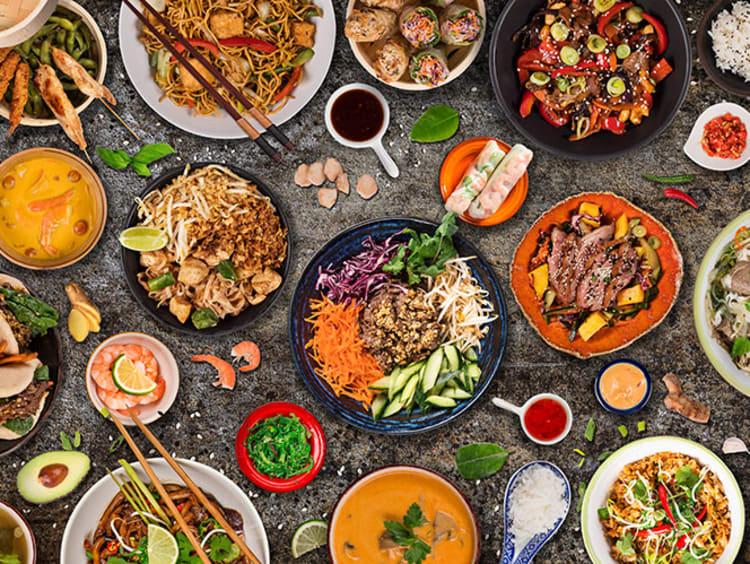The USA Ethnic Food Market Growth, Top Players and Future Opportunities

The USA ethnic food market is undergoing a dynamic transformation, fueled by the country’s growing cultural diversity and consumers’ increasing appetite for global culinary experiences. As American palates become more adventurous, the demand for authentic, flavor-rich ethnic foods is expanding rapidly. Influenced by immigration trends, social media exposure, and a broader interest in multiculturalism, this market is embracing traditional cuisines while also adapting them to modern preferences. Health-conscious eating, plant-based alternatives, and fusion trends are reshaping ethnic food offerings, making them more accessible and appealing to a younger, experience-driven demographic. From Asian and Latin American dishes to Middle Eastern and African flavors, the USA’s ethnic food market is evolving into a vibrant and inclusive sector that reflects the country's changing tastes and values.
Major Players in the US Ethnic Food Industry
The ethnic food market has seen a significant expansion, driven by increasing multicultural demographics and consumer demand for diverse flavors. Major players in this arena are capitalizing on various trends, from authentic international cuisine offerings to innovative product adaptations that cater to local tastes.
- General Mills Inc. – This food giant has increasingly invested in ethnic brands, with their Old El Paso and Annie’s lines featuring Mexican and organic ethnic food options. Their strong marketing initiatives emphasize authenticity and convenience, appealing to a broad consumer base.
- Conagra Brands – Home to brands like Pamela's and Marie Callender's, Conagra has diversified its portfolio to include a range of global cuisines. Their strategy focuses on the rising popularity of frozen and shelf-stable ethnic foods, making them accessible to everyday consumers.
- Kraft Heinz Company – With a commitment to providing international flair, Kraft Heinz is expanding its offerings in the Asian and Latin American food segments. Their approach often includes collaborations with local chefs to ensure authenticity and appeal.
- Unilever – Majorly recognized for their sauces and seasonings, Unilever’s brands, such as Knorr, cater to the demand for easy-to-cook ethnic meals. They focus on sustainability and healthier ingredients, resonating with modern consumers' values.
These players not only dominate market share but also influence trends through innovation and marketing efforts, significantly shaping the ethnic food landscape.
To understand how premium brands are adapting their strategies in the ethnic food sector, review the Global Ethnic Foods Market. It details market-entry tactics, after-sales innovations, and partnership models proven to build brand equity.
Growth Trends: What’s Cooking?
-
Increasing Cultural Diversity: A growing immigrant population is expanding demand for authentic ethnic foods reflective of diverse backgrounds.
-
Adventurous Consumer Palates: Millennials and Gen Z are seeking global flavors and culinary experiences beyond traditional American cuisine.
-
Health-Conscious Eating Trends: Many ethnic cuisines are naturally rich in plant-based, whole, and nutrient-dense ingredients, aligning with wellness preferences.
-
Social Media & Global Exposure: Platforms like TikTok and Instagram are influencing food trends, accelerating the popularity of international dishes.
-
Expansion of Retail & E-commerce Channels: Ethnic foods are increasingly available in mainstream grocery stores and online platforms, improving accessibility.
Explore how evolving consumer preferences are driving growth in the Ethnic Foods Market. This study compares market dynamics, growth drivers, and consumer behavior trends that can inform your strategic decisions.
Future Opportunities in US Ethnic Food Market
-
Fusion Cuisine Innovation: Blending ethnic flavors with contemporary formats (e.g., Korean tacos, Indian-style wraps) to attract younger, experimental consumers.
-
Health-Focused Product Lines: Launching ethnic food products that emphasize functional ingredients (e.g., turmeric, ginger, whole grains) to target the wellness market.
-
E-commerce Growth: Leveraging digital platforms to distribute niche or regional ethnic products nationwide and build direct-to-consumer relationships.
-
Partnerships with Influencers & Chefs: Collaborating with culinary experts and food influencers to boost authenticity and brand visibility.
-
Emphasis on Authenticity: Offering traditional preparation methods and culturally accurate recipes to build brand trust and consumer loyalty.
Conclusion
The ethnic food market in US is poised for sustained growth as it adapts to evolving consumer demands, with significant opportunities arising from innovation and market expansion. By understanding these trends, stakeholders can strategically position themselves to capitalize on future developments in the market."
- Art
- Causes
- Crafts
- Dance
- Drinks
- Film
- Fitness
- Food
- Games
- Gardening
- Health
- Home
- Literature
- Music
- Networking
- Other
- Party
- Religion
- Shopping
- Sports
- Theater
- Wellness


